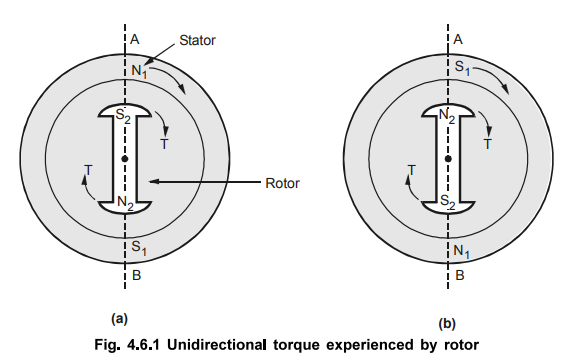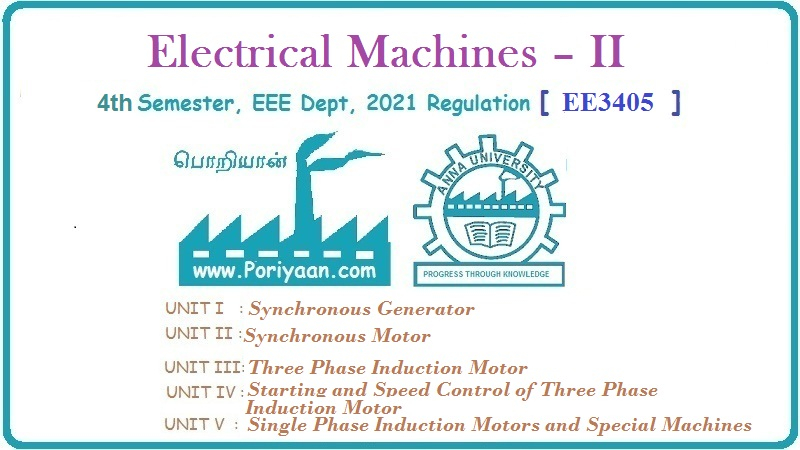Electrical Machines II: UNIT II: Synchronous Motor
Procedure to Start a Synchronous Motor
Once magnetic locking is established, the rotor and stator poles continue to occupy the same relative positions.
Procedure to Start a Synchronous Motor
Now
suppose the rotor is rotated by some external means at a speed almost equal to
synchronous speed. And then the rotor is excited to produce its poles. At a
certain instant now, the stator and rotor unlike poles will face each other
such that their magnetic axes are near each other. Then the force of attraction
between the two, pulls both of them into the magnetic locking condition.
Once
magnetic locking is established, the rotor and stator poles continue to occupy
the same relative positions. Due to this, rotor continuously experiences a
unidirectional torque in the direction of the rotating magnetic field. Hence
rotor rotates at synchronous speed and said to be in synchronism with rotating
magnetic field. The external device used to rotate rotor near synchronous speed
can be removed once synchronism is established. The rotor then continues its
rotation at Ns due to magnetic locking. This is the reason why synchronous
motor runs only at synchronous speed and does not rotate at any speed other
than the synchronous. This operation is shown in the Fig. 4.6.1 (a) and (b).

It
is necessary to keep field winding i.e. rotor excited from d.c. supply to
maintain the magnetic locking, as long as motor is operating.
So
a general procedure to start a synchronous motor can be stated as :
1.
Give a three phase a.c. supply to a three phase winding. This will produce
rotating magnetic field rotating at synchronous speed Ns r.p.m.
2.
Then drive the rotor by some external means like diesel engine in the direction
of rotating magnetic field, at a speed very near or equal to synchronous speed.
3.
Switch on the d.c. supply given to the rotor which will produce rotor poles.
Now there are two fields one is rotating magnetic field produced by stator
while the other is produced by rotor which is physically rotated almost at the
same speed as that of rotating magnetic field.
4.
At a particular instant, both the fields get magnetically locked. The stator
field pulls rotor field into synchronism. Then the external device used to
rotate rotor can be removed. But rotor will continue to rotate at the same
speed as that of rotating magnetic field i.e. Ns due to magnetic
locking.
Key Point So the essence of the
discussion is that to start the synchronous motor, it needs some device to
rotate the rotor at a speed very near or equal to the synchronous speed.
Review Question
1. Explain the
procedure for starting synchronous motor.
AU : May-07, Dec.-05, 07, 10, Marks 5,
Electrical Machines II: UNIT II: Synchronous Motor : Tag: Engineering Electrical Machines - II : - Procedure to Start a Synchronous Motor
Related Topics
Related Subjects
Electrical Machines II
EE3405 Machine 2 EM 2 4th Semester EEE Dept | 2021 Regulation | 4th Semester EEE Dept 2021 Regulation
